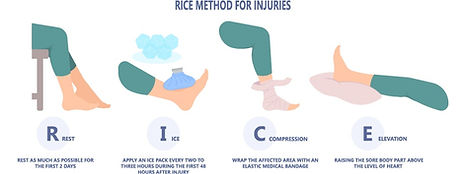
Achilles
-
High-impact sports like running, jumping, and soccer pose a significant risk for Achilles tendon injuries, including tendinopathy, ruptures, and muscle strains.
-
Major risk factors include previous injuries, poor biomechanics, and excessive training loads.
-
Preventive measures, such as neuromuscular training, load management, and gradual progression can reduce injury risk by up to 50%.
-
Achilles tendon issues account for 5–12% of running-related injuries
Signs and Symptoms
Immediate Care (RICE Method)

-
Rest: Avoid weight-bearing activities; use crutches if necessary
-
Ice: Apply ice (15-20 min, every 2-3 hours) to reduce swelling
-
Compression: Use an elastic bandage or brace for support
-
Elevation: Keep the foot elevated to minimize swelling
-
Pain Relief: NSAIDs (ibuprofen, naproxen) as recommended
When to see a doctor
-
Sudden, severe pain or an audible pop in the tendon
-
Swelling that worsens despite home treatment
-
Inability to stand on tiptoes or push off when walking
-
Visible deformity in the Achilles tendon area
Professional Treatment
Non-Surgical:
Physical therapy (stretching & strengthening)
Heel lifts or orthotic inserts for support
Eccentric strengthening exercises
Surgical (For Ruptures):
Surgical tendon repair
Post-op immobilization (cast or boot)
Long-term rehab (6–12 months)
Prevention Strategies
-
Strength Training:
-
Calf raises, eccentric heel drops
-
Resistance band exercises for ankle stability
-
-
Flexibility & Warm-ups:
-
Stretch calves and Achilles tendon daily
-
Gradually increase workout intensity
-
-
Gear Recommendations:
-
Supportive footwear with proper heel cushioning
-
Orthotic inserts for foot alignment correction
-
